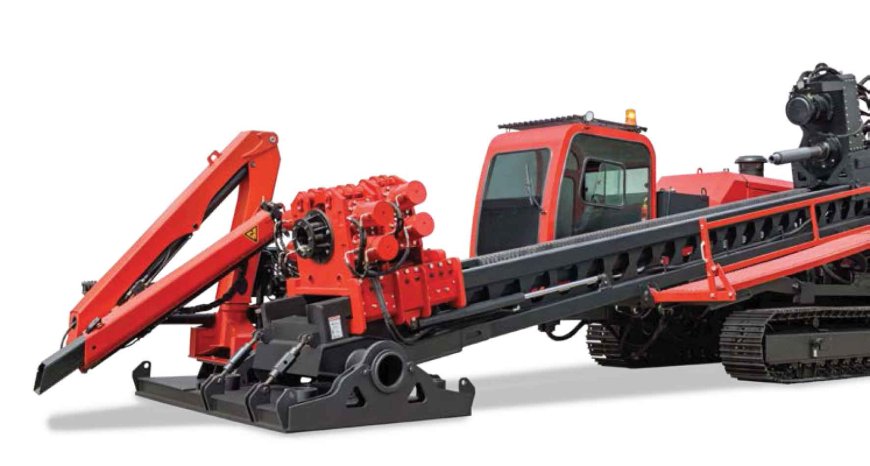Horizontal Development!
Trenchless technology consists of the methods, materials, and equipment used for replacing, rehabilitating, or installing pipes with little or no excavation of the ground above. Equipment Timeslooks into India as a promising market for Horizontal Directional Drilling machines (HDD) /

Trenchless technology consists of the methods, materials, and equipment used for replacing, rehabilitating, or installing pipes with little or no excavation of the ground above. Equipment Times looks into India as a promising market for Horizontal Directional Drilling machines (HDD) / trenchless technologies, latest technologies, advantages of using HDD versus the conventional methods, challenges and scope of HDD rentals and used equipment market in India.
Trenchless technology is the science of installing, repairing and renewing underground Pipes, ducts and cables using techniques which minimize or eliminate the need for excavation. It can reduce environmental damage, Social costs and produce in alternative to the open trench method of installation, renewal and repair it includes in, development of all kinds of underground napping techniques, tunnelling devices and specialist materials and equipment.
It also makes it possible to install the utilities under rivers, highways, canals and other obstacles with no disruption of flow and with minimum or no damage to the environment, reports constrofacilitator.
Horizontal directional drilling (HDD) method…
Horizontal directional drilling (HDD) is one of the most special ways to install underground cycles with minimal damage to the environment. In addition, HDD technique also ensures greater accuracy compared to vertical methods. Straight drilling techniques require fewer holes to drill as compared with conventional drilling methods. In other words, HDD machines can place multiple pipes in one more surface, which means that the surface area of the drilling surface is reduced. This sustainable construction method also requires less set space. This capability makes it ideal for crowded public spaces, where projects must be completed in a brief period, to avoid disruption caused by the community to avoid traffic congestion.
New Installations
Methods for installation of a new pipeline or duct, including dealing with service connection are:
- Micro tunnelling
- Horizontal directional drilling
- Short drive system
- Guided drilling
Micro Tunneling
Controlled excavation – steerable – Less than 1000mm diameter – Medium length.
Micro tunnelling is a term which is used to describe remotely controlled mechanical tunnelling systems where the spoil is removed from the cutting head within the new pipeline which is advanced by pipe jacking.
Micro tunnelling machines have now been developed to work from drive shafts in almost all types of ground conditions. The cutting head has to be carefully selected to deal with the expected ground conditions, with the appropriate cutting tools and crushing devices for the range of gravels, sands, slits, and clays.
The only excavating required from the service is to drive and receptions shafts. Spoil may be removed from the face by an auger running through the newly installed pipeline to a skip in the base of the drive shaft.
Alternatively, water or bentonite may be used to convert the soil into slurry at the cutting face. The slurry is less then pumped to the surface where the solids are separated before disposal.
Micro tunnelling is used extensively in sewerage work where surface disruption has to be minimized. Machines are now available to drive 100mm or more in soft ground for sizes 100mm diameter upwards. From drive shafts of less than 3mm diameter.
Micro tunnelling system has been developed in which temporary steel tubes are jacked in and removed at the next manhole position, the new pipeline following in the established bore. In micro tunnelling, the only indication on the surface is the presence of a control container with a hoist for lowering pipes into the drive shafts. Noise levels and traffic disruption are minimized.
Horizontal Directional Drilling
Steerable heavy, powerful rig-Large size range –Long distances.
Horizontal drilling systems are nowadays widely used for installing pressure pipes under major obstacles such a motorway intersection, large rivers and airport runways.
A small rotating and steerable drill bit is launched from the surface at an angle 10-15 and is used to drill 90mm mud filled diameter hole. During the drilling operation a 125mm diameter wash over pipe is drilled over the pilot string and following some 100mm behind the head.
Alternate drilling then continues on the pilot string is removed and the bore is enlarged by a rotating barrel reamer attached to and pulled back by the wash over pipe, drilling mud being used to lusted away the cuttings and to support the reamed hole. Subsequent caming continues until the required diameter is achieved. The product pipe is less than attached to the reaming head and pulled through the bore drives of more than 1.5km and of up to 1200mm diameter have been carried out.
Market Scope for HDD and Structure Analysis
Horizontal drilling is much simpler and more environment-friendly compared to normal vertical alignment. It is suitable for installing cables, canals, and short-distance pipelines and long-distance projects even at deep depths. The introduction of new generations of mobile communication technologies, such as 4G and 5G, has increased the need for people with the ability to transfer systems.
As a result, horizontal directional drilling settings are increasingly being introduced to install new transmission lines. In addition, the surge in demand for efficient distribution of electricity and natural gas from the upper and middle pipeline lines is expected to drive the horizontal drilling machine services market growth. With the help of HDD rigs and other equipment, substantial amounts of oil & gas can be extracted from ponds, found at depths of 10,000 feet while creating a small impact on the environment. In addition, HDD setting consumes less space, thus making it ideal for situations where projects are located in densely populated areas and need to be completed within a short period of time.
Hits: 389








